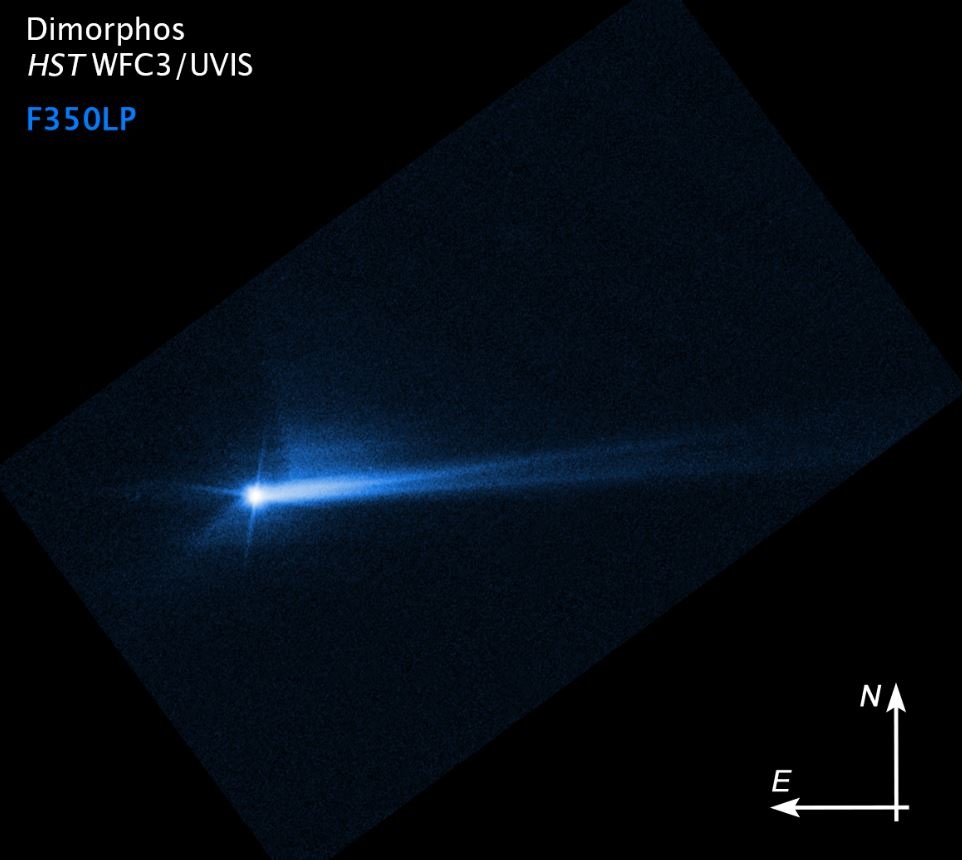The United States Space Agency (NASA) took aim at an asteroid last month, and on Tuesday, the space agency stated that its anticipated collision with an object dubbed Dimorphos at a speed of 14,000 miles per hour made even more of a bull’s-eye shot than projected.
That game-winning strike was the first successful attempt of its sort. “We showed the world that NASA is serious as a defender of this planet,” said Bill Nelson, the administrator of NASA, at a press conference. “We performed humanity’s first planetary defence test.”
In November of 2021, NASA began the Double Asteroid Redirection Test, often known as DART for short, by sending a spacecraft about the size of a refrigerator in the direction of a tiny asteroid. The DART was an anti-it weapon that had been developed by scientists.
On September 26, the spacecraft collided with a relatively minor asteroid in the hopes that this would cause a change in Earth’s orbit. This method has the potential to defend the Earth from any impending comets or asteroids. If a space rock’s trajectory is altered in such a way that it deflects an asteroid away from a path that would bring it into collision with Earth, then humanity will be able to breathe a huge sigh of relief in the distant future.
The mission’s objective, known as Dimorphos, was a relatively small space rock with a width of little more than 500 feet. It was and still is safe, and there is no danger that it may pose to Earth. Before the collision of DART, the smaller asteroid Dimorphos completed one circle around the bigger asteroid Didymos every 11 hours and 55 minutes. On the day of the collision, an onboard camera captured images of the asteroid as it moved ever closer to the spacecraft. The surface of the asteroid filled the screen as the spaceship got closer to it, and pebbles started coming into focus just before the communication stopped. DART and its camera had collided with the surface that they were observing at the time.
Not only did the spacecraft establish communication with Dimorphos, but it also modified the orbit of the space rock, cutting by 32 minutes the amount of time it took to circle a bigger asteroid.
This temporal shift was specifically one of the goals that the DART mission planned to achieve. The researchers had high hopes that the collision would bring Dimorphos closer to Didymos and hasten its orbit. They have been analysing the collected data and conducting additional observations of the double-asteroid system in an effort to determine how successful this particular defence mechanism was. According to Mr. Nelson, the scientific community would have regarded DART as an enormous triumph even if it had just succeeded in reducing the orbit of Dimorphos by ten minutes. The group that was in charge of managing the mission was ecstatic when they saw the reality, which was around three times the shift.
Mr. Nelson said that if an asteroid that posed a danger to Earth was found and we were able to observe it from a sufficient distance away, then this method could be utilised to deflect the asteroid.
DART was the first mission to test this method that may be employed in the future to defend the planet from dangerous space rocks. This defence of the earth from potentially harmful space rocks is a more recent addition to NASA’s portfolio. The majority of these asteroids are known and can be followed, yet for some reason they still give astronomers sleepless nights. These asteroids are not necessarily the gigantic planet-destroying asteroids that are often depicted in science fiction. Instead, they are concerned about the smaller ones, like Dimorphos, which are more difficult to find, more common, and are capable of inflicting significant harm to people and property on Earth.
As a result of the fact that scientists have shown that they are able to influence the path that an asteroid takes, they have moved one step closer to developing this tactic into a strategy that can safeguard the planet. But there is still a lot of work to be done in order to turn the scientific research into a mission that can really be carried out.
In the days, weeks, months, and years to come, astronomers will be monitoring the first celestial object with an orbit humans have altered using sensors both on Earth and in space. According to Tom Statler, who works as a programme scientist for DART at NASA, “We have a lot of work ahead of us” in order to fully comprehend what took happened.
This analysis will help disclose how best to shield the Earth from potentially lethal asteroids, which is the type of action that is not achievable with the majority of natural catastrophes. It has been shown by DART that scientists are capable of diverting a potentially dangerous asteroid of the size of Dimorphos. However, this deflection will require detection, which can be accomplished through the use of telescopes on Earth and future space missions to find asteroids at an early enough stage, gain an understanding of their characteristics, and strike them with what we have while they are still relatively far away.
